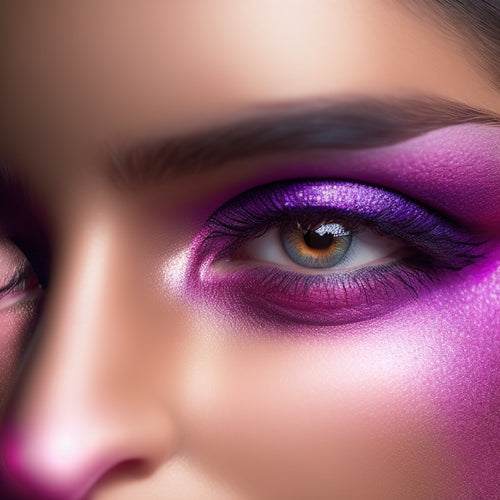
Can You Wear Dance Shoes Outdoors?
Share
To ensure the longevity of your dance shoes, it is crucial to avoid wearing them outdoors. Exposure to rough surfaces can lead to damage to the soles and materials, as well as premature wear and tear, water damage, and dirt accumulation that can impact their performance and lifespan. Different types of dance shoes, like ballet flats or tap shoes, have specific features that may not be suitable for outdoor use. Understanding the risks and properly caring for your dance shoes can help prolong their lifespan. However, it is important to consider the benefits versus the potential drawbacks. There is more to explore on this topic.
Key Takeaways
• Wearing dance shoes outdoors can expose them to rough surfaces, dirt, and moisture, causing damage and premature wear and tear.
• Outdoor elements can damage the soles and material of dance shoes, affecting their performance and lifespan.
• Cleaning and maintaining dance shoes regularly is essential to preserve their quality and extend their lifespan.
• Choosing the right type of dance shoes suitable for outdoor use is crucial, and using shoe covers or protective gear can help shield them from outdoor conditions.
• Rotating between different pairs of dance shoes and storing them in a cool, dry place can help prevent excessive wear and tear.
Risks of Wearing Dance Shoes Outdoors
When you wear dance shoes outdoors, you expose them to various elements that can compromise their quality and shorten their lifespan. Street hazards like rough sidewalks, gravel, and broken glass can cause sole damage, scratching, or puncturing the delicate materials.
The outdoor environment can also expose your shoes to dirt, dust, and moisture, which can seep into the materials and cause deterioration. Additionally, the constant impact of walking or dancing on hard surfaces can lead to premature wear and tear.
Different Types of Dance Shoes
You'll find that different types of dance shoes are designed to cater to specific dance styles, each with unique features that enhance performance and comfort. Depending on the dance style, shoes can vary greatly.
Here are a few examples:
-
Ballet flats: Designed for ballet and contemporary dance, these shoes provide flexibility and support for intricate footwork.
-
Ballroom heels: High heels designed for ballroom and Latin dance, providing stability and support for quick turns and movements.
-
Jazz shoes: Offering flexibility and traction, these shoes are perfect for jazz, funk, and hip-hop dance.
- Tap shoes: Equipped with metal plates for creating rhythmic sounds, these shoes are designed for tap dance.
Understanding the differences between these shoes will help you choose the right pair for your dance style, ensuring excellent performance and comfort.
Outdoor Surfaces and Their Effects
Dancing outdoors on various surfaces can greatly impact your dance shoes' durability and performance, and understanding these effects is essential for making informed decisions about when to wear your dance shoes outside.
When you take your dance shoes outdoors, you're exposing them to a range of surfaces that can affect their performance. Trail surfaces, for instance, can be particularly harsh, with rough terrain and uneven ground that can cause excessive wear on the soles.
Pavement roughness is another aspect to take into account, as it can cause friction that can lead to premature wear on the shoes' materials.
Can You Wear Suede Shoes Outside
When contemplating wearing suede shoes outside, you'll want to think carefully about how they'll hold up to the elements.
Water, in particular, can be a major concern, since it can cause suede to stain or discolor.
Before taking your suede shoes outdoors, it's crucial to understand how to protect them from water and harsh weather conditions.
Suede Shoes and Water
Suede shoes, with their delicate nap and soft finish, are notoriously vulnerable to water damage, making them a poor choice for outdoor wear in wet or humid conditions. You might be tempted to wear your suede dance shoes outside, but it's crucial to bear in mind the risks. Here are some reasons why suede shoes and water don't mix:
-
Water spots: Water can leave unsightly spots on your suede shoes, damaging their appearance.
-
Loss of suede durability: Water can weaken the suede material, reducing its durability and lifespan.
-
Color running: Water can cause the dyes in your suede shoes to run, resulting in discoloration.
- Shrinkage: Water can cause suede to shrink, altering the fit of your shoes.
Suede Care and Maintenance
Minimizing the risks associated with wearing suede shoes outside requires prioritizing proper care and maintenance to extend their lifespan. You can't just wear them and forget about it - suede needs TLC!
Regular suede conditioning will keep the material soft and supple, making it more resistant to water and stains. When you notice your shoes looking dull or worn, it's time for suede restoration. Use a gentle cleaning product specifically designed for suede, and avoid harsh chemicals that can damage the material.
Suede and Harsh Weather
When you're heading outdoors, you'll want to take into account the weather forecast before slipping on your suede shoes, as rain, snow, or excessive humidity can wreak havoc on the delicate material. Suede durability is essential when it comes to weather resistance. Here are some key considerations to keep in mind:
-
Avoid wet conditions: Rain, snow, or puddles can leave unsightly water spots or stains on your suede shoes.
-
Humidity matters: High humidity can cause suede to become soggy or discolored.
-
Direct sunlight is a no-go: Prolonged exposure to direct sunlight can cause suede to fade or become brittle.
- Clean carefully: Avoid using harsh chemicals or excessive water when cleaning your suede shoes, as this can damage the material.
How to Protect Your Dance Shoes
Clean your dance shoes regularly to prevent dirt and debris from accumulating and causing damage. By doing so, you'll extend the lifespan of your shoes and maintain their performance.
Invest in shoe trees to help maintain the shape of your shoes when not in use. This is especially important for dance shoes made of sensitive materials.
Your dance habits also play a significant role in protecting your shoes. Avoid wearing them outdoors, and try to limit your practice sessions to smooth, even surfaces.
Alternatives to Wearing Dance Shoes
If you're excited to enjoy the outdoors while still protecting your dance shoes, consider investing in a pair of outdoor shoes that mimic the feel and support of your dance shoes. This way, you can still enjoy your outdoor activities without compromising the quality of your dance shoes.
Here are some alternatives to wearing dance shoes outdoors:
-
Street shoes: Designed for everyday wear, street shoes can provide similar support and flexibility to dance shoes.
-
Casual sneakers: A great option for casual outdoor activities, sneakers offer comfort and support while protecting your dance shoes.
-
Cross-trainers: These shoes provide support and stability for outdoor activities like hiking or biking.
- Walking shoes: Designed for walking and outdoor activities, these shoes can provide similar support to dance shoes.
Caring for Your Dance Shoes
As you take steps to preserve your dance shoes, you'll want to focus on two key areas: cleaning and storing them properly.
You'll need to remove dirt and stains from the shoes' surface, and then store them in a way that maintains their shape and prevents damage.
Cleaning Dance Shoes
Take care to remove loose dirt and debris from the outsoles of your dance shoes daily, using a soft-bristled brush or a dry cloth to prevent scratching the surface. This daily routine helps maintain the overall condition of your shoes. To take it a step further, incorporate these practices into your cleaning routine:
-
Wipe down the uppers: Use a damp cloth to remove dirt and stains from the upper material.
-
Sanitize with shoe sanitizers: Kill bacteria and odor-causing germs with a shoe sanitizer.
-
Condition the leather: Apply a leather conditioner to keep the material soft and supple.
- Allow to air dry: Let your shoes air dry completely to prevent moisture buildup.
Storing Dance Shoes
Store your dance shoes in a cool, dry place away from direct sunlight to preserve their quality and extend their lifespan. You've invested in your dance shoes, now it's time to protect that investment. Proper storage is key to maintaining their condition.
Implement a Dance Closet Organization system to keep your shoes organized and easily accessible. Invest in Shoe Box Essentials like breathable bags or boxes with dividers to separate each pair. This will prevent scratching and crushing.
When storing, avoid stacking shoes on top of each other, as this can cause damage to the materials. By following these simple steps, you'll be able to enjoy your dance shoes for many performances to come.
Frequently Asked Questions
Can I Wear Dance Shoes in the Rain or Snow?
You shouldn't wear dance shoes in the rain or snow, as the slippery rainy pavement and snowy sidewalks will compromise your traction, making it difficult to move safely, and potentially damaging your shoes.
Are Dance Shoes Suitable for Hiking or Trail Walking?
When tackling rocky terrain and uneven paths, you'll want sturdy, ankle-supporting shoes with grip and traction, not dance shoes, which lack the necessary stability and protection for hiking or trail walking.
Can I Wear Dance Shoes on a Treadmill or Stationary Bike?
When you hit the gym for a Spin Class or intense Cardio Workout, you can definitely wear dance shoes on a treadmill or stationary bike, as they provide the necessary support and stability for your high-energy session.
Are Dance Shoes Okay to Wear at an Outdoor Music Festival?
"When in Rome, do as the Romans do" - at an outdoor music festival, you'll want to adapt to the festival grounds' terrain. You'll be grooving to the music vibes, feeling the stage presence, and moving with the crowd, so wear shoes that can keep up with your festival fashion!
Can I Wear Dance Shoes to Walk My Dog or Pet?
As a pet owner, you're wondering if dance shoes are suitable for your daily routine, like walking your dog. Honestly, it's not the best choice, as they lack support and traction, putting you and your pet at risk.
Related Posts
-

3 Essential Tips for Dance Makeup Online Visibility
You need a strong online presence to stand out in the competitive dance makeup industry. To boost your online visibil...
-

What Makes a Stunning Lyrical Dance Makeup Look?
You craft a stunning lyrical dance makeup look by balancing ethereal, emotive essence with subtle, shimmering accents...
-

Innovative Therapy: Dance Movement's Healing Power
Dance movement therapy is a creative and evidence-based approach that harnesses the transformative power of movement ...


